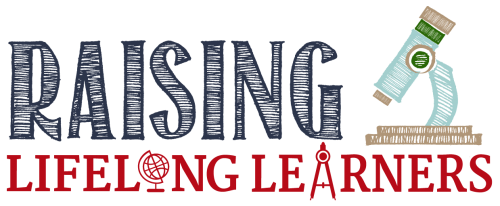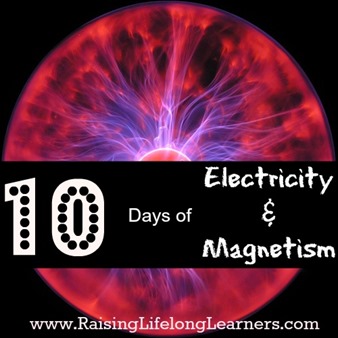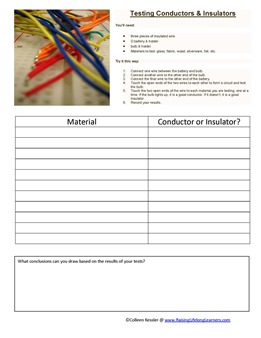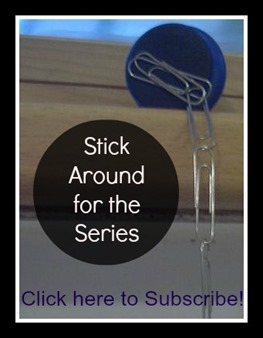Testing Conductors and Insulators
Day 6 of Electricity and Magnetism is here – phew! Are you gathering materials to use this as a unit study for your elementary kids? I hope it’s been a helpful supplement to your homeschool. Today we’re testing conductors and insulators.
Have your kids wondered why wire is coated in rubber, thick plastic, or another material? Some materials carry electricity better than others. These are called conductors, and things through which electricity cannot travel {or travel through poorly} are called insulators.
Cut a piece of wire for your child and strip the coating off the tip of it. Explain that the metal inside is a very good conductor of electricity and the coating is an insulator. It keeps the electricity flowing along the circuit within the wire.
When wires are connected to batteries and bulbs, the bulbs light because there is a good conductor making a path for that current. Insulators act as a barrier to the flow of electricity. In this activity, your child can test different materials around the house to see what are good insulators and what are good conductors.
You’ll need:
- three pieces of insulated wire
- D battery & holder
- bulb & holder
- Materials to test: glass, fabric, wood, silverware, foil, etc.
Try it this way:
- Connect one wire between the battery and bulb.
- Connect another wire to the other end of the bulb.
- Connect the final wire to the other end of the battery.
- Touch the open ends of the two wires to each other to form a circuit and test the bulb.
- Touch the two open ends of the wire to each material you are testing, one at a time. If the bulb lights up, it is a good conductor. If it doesn’t, it is a good insulator.
- Record your results on the notebooking page below.
Were you or your kids surprised by any of the results? I always think it’s fun to test things around the house – or measure them in math. Using things kids are familiar with to put school concepts into perspective forms a connection that lends relevance to the topic.
Sick of electricity yet? Come back tomorrow when we explore how magnetism relates to electricity and play around with magnets a bit. While you wait, be sure to check out some of the other bloggers participating in the Hopscotch.



